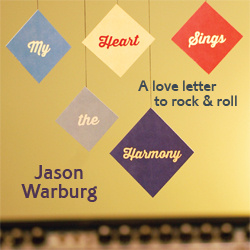Even four short years into his career, Bob Dylan was throwing curveballs at his listeners. On his previous album Bringing It All Back Home, he dared to challenge them by making one half of the disc acoustic, and the other half filled with electric guitars.
Now, with Highway 61 Revisited, Dylan used his sixth album to further the challenge. Now, all but one song featured an electric backing band… and this time, he expects the listener to think.
What do I mean? Very simple: this is not an album you're going to appreciate fully on the first listen. Or the second. Or even the third. You are going to have to be willing to put some serious time into this disc to truly understand and appreciate what Dylan is trying to accomplish. The good news is, it's worth the effort.
Unless you are a complete newbie into the world of Dylan, it's fairly obvious you won't have to put that kind of effort into the disc's opening track, “Like A Rolling Stone.” Possibly one of Dylan's best-known songs, it maintains the level of lyrical poetry he had come to be known for, all with a very solid performance by his backing band (including Al Kooper on organ). There's a reason this track is a classic, and it's definitely earned its title.
The remainder of the disc, though, requires the listener's undivided attention and full brain power. I lost count of how many times I listened to songs like “Tombstone Blues,” “From A Buick 6” and “It Takes A Lot To Laugh, It Takes A Train To Cry,” but it was somewhere between three to five times each song. No, it's not the most accommodating music Dylan had written to that point (or would write down the road), but when the listener takes the time, hears what Dylan is saying and then pairs it up to the music, only then does one comprehend just what they're listening to, and why it was so important to put so much effort into it.
Not every track requires this serious thought, though. “Just Like Tom Thumb's Blues” will undoubtedly be familiar to fans of latter-day Grateful Dead (thanks to Phil Lesh's vocalizations), but Dylan shows in this recording why this song will always be his and his alone. In a similar manner, the disc's closer “Desolation Row” – the only purely acoustic song on the disc, and the longest at just under 11-and-a-half minutes – seems to bring Dylan full circle to where he had started just a few short years prior, but also shows how he had grown and matured as a performer, singer and artist – and the time tends to fly by.
Yes, Highway 61 Revisited isn't as immediately accessible as some of Dylan's albums to this point, which may scare some people away. This isn't an album you can just throw on as background noise, and expect to be distracted from the pabulum of the everyday world. Dylan grabs you by the lapels and shakes you, demanding that you pay attention to what he's saying on this disc – again, another challenge to the listener and the fan. It will throw some people off, to be certain, but others will embrace the challenge – and the rewards are many.
Casual fans of Dylan could easily cull the few hits they'd know off this disc from any of the greatest hits compilations that have been thrown together over the years. But they'd be missing something in the end – namely, hearing those songs in the environment they were designed for. Highway 61 Revisited isn't the easiest listen, but it's hardly a bad one, and is well worth your time and energy.